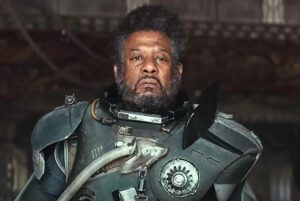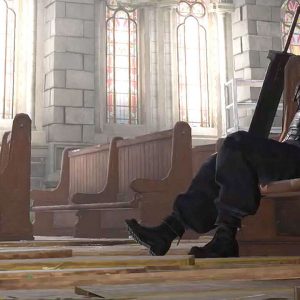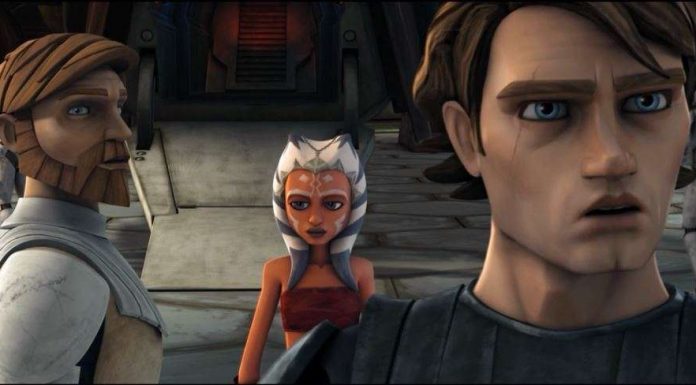There’s not been a lot of progress in the last several years.
I’ve been a gamer for almost three decades, but I’ve been black my entire life. When I started gaming on my first Atari 2600 in 1982, the thought of having characters who looked like me — in stories relevant to my background or culture — was the furthest thing from my mind.
In ‘82, I was obsessed with roping pixelated cattle on Stampede and dodging crocodiles with Pitfall Harry in Pitfall. In 2019, I find myself confused as to why there hasn’t been a huge amount of progress in black representation in video games. From the lack of black protagonists in triple A titles to the uneasy fact that black avatars always play second fiddle to white ones — I have to pay almost $10 just to have a black avatar represent me in a free-to-play game like Guns of Glory — the slow progress is puzzling.
It seems like such a trivial thing, and for the majority of readers for whom identity is rarely an issue, it’ll likely be treated as such. But now, wrapping up what seems like the most ironic Black History Month in years — where elected officials admit to wearing blackface with little to no consequence — I find myself wondering just how far we’ve come in providing diverse characters in games to those who play them.
When it comes to black protagonists, the noteworthy name that often comes up most is Carl Johnson, the main character in Grand Theft Auto: San Andreas. Of course, Carl, popular though he may be, is a key example of how black men are usually represented in media: as a gangbanger.
Sure, Carl’s story largely deals with his struggle to escape the dangers of ghetto life, which certainly sets CJ in a sympathetic light, but that narrative nuance doesn’t help his character (or black men) escape the more prominent implication that comes with that frequent association.
Additionally, one could argue that there are already plenty of black characters front and center, particularly if franchises based on the NFL and NBA are included. But even though none of those characters carry a gun or live in the ‘hood, they represent a different type of stereotype — that of the athlete or entertainer — and it’s one that black men (and women) are often forced to bear.
In the 2009 study, “The Virtual Census: Representations of Gender, Race and Age in Video Games1,” published by the University of Southern California, black characters were cited as more represented than Hispanic or Native American characters, at a rate that somewhat mirrored the true demographic structure, far below that of white, male characters, who are overrepresented. Essentially, that means there were about as many black characters as there were black gamers (not to scale, of course). Some of the more memorable of that time were CJ, as previously mentioned, and Sheva Alomar of Resident Evil 5 in addition to an assortment of playable characters in various fighting games.
In the 10 years since the report published — with few exceptions such as characters like Marcus Holloway in Watch Dogs 2, Sgt. James Heller in Prototype 2 and a notable handful more– little seems to have changed in the overall landscape (and, unfortunately, an updated study has yet to come). Developers still create games that overwhelmingly feature white male characters, and the question now as it was when the USC researchers released their findings is: “Why”?
If representation matters, there should be more characters of color available for anyone to use, regardless of who they are themselves. And even if representation didn’t matter, then there shouldn’t be a problem offering up as many options as possible, because who could it hurt, right?
Well, interestingly, Ubisoft received a fair amount of scrutiny for statements made during the development of 2014’s Assassin’s Creed: Unity; the question of whether or not gamers would have the option of playing as a woman was answered by Unity creative director Alex Amancio in a Polygon interview when he stated that “the reality of production” made that option cost prohibitive.
Amacio’s claim was refuted by prominent developers like Naughty Dog animator and former Ubisoft animation director (who worked on Assassin’s Creed III) Jonathan Cooper who, in a Twitter post, argued that adding women assassins as an option would be “a day or two’s work.”
Despite the myriad stories about developer burnout due to insane schedules for eagerly awaited games, in addition to claims of cost overruns, the larger question is why are white male characters still the default?
“
Despite the myriad stories about developer burnout due to insane schedules for eagerly awaited games, in addition to claims of cost overruns, the larger question is why are white male characters still the default?
At the end of 1986’s Metroid, players were shocked to discover that the hero they played as, Samus Aran, was a woman, something that flew in the face of every trope imaginable. Even as normalized as sexism was in the 80s, playing as a woman didn’t destroy video gaming as we know it. In fact, Samus has since become an icon in gaming, with a history that includes a number of titles in the Metroid series, with more on the way.
Without going off the rails conflating sexism with racism in gaming — as they’re two similar yet wholly different struggles — it still stands to reason if one franchise can stand (and grow) with a woman (albeit white) as the star, why don’t more developers take a chance and produce games with diverse characters whose race or background are independent of the storyline?
According to his original design of God of War hero Kratos (voiced, coincidentally, by black actor Terrence C. Carson), creator David Jaffe wanted a character that “looked brutal, but did not resemble a typical traditional Greek hero2.” If Greek mythology wasn’t a priority to begin with, why couldn’t the in-game representation of Kratos have been black? Or more to the point, why couldn’t God of War as a series have focused on African folklore?
In the uber-successful Red Dead series, the developers could’ve opted to tell a cowboy’s story from a black lead character’s perspective, as opposed to just a handful of NPCs whose narrative contributions were occasionally fleeting moments experienced through campfire chats and hunting expeditions. Lenny felt like a fresh addition — he had an accurately-representative backstory that worked to teach Arthur about experiences he would otherwise be unfamiliar with — but that impact felt ephemeral.
It took Yoshio Sakamoto and Hiroji Kiyotake to change the paradigm by making Samus Aran* a woman3, and so maybe the onus is on developers to change the paradigm even further by just creating games with black characters in the lead.
Maybe the fear of a black avatar doesn’t lie with the gamers after all. Maybe the choice is as simple as developers removing black avatars from perceived irrelevance — or, worse so, removing them from behind a paywall — and allowing everyone the opportunity for more equal representation without it being turned into a premium or a marketing bullet point.
The choice may be theirs, but ultimately it’s also ours, regardless of race, creed, color, or sex. The first step towards walking a mile in someone else’s shoes could be as simple as pressing “play.”
*According to an August 2004 edition of “Nintendo Dream” magazine, Sakamoto and Kiyotake took Samus Aran’s name from Edison Arantes do Nascimento, better known as football legend Pele, who just so happens to be black.
Hashim R. Hathaway is a freelance writer and head gasbag at the soon-to-relaunch Never Daunted Radio Network. You can follow him on Twitter @NeverDauntedNet


























